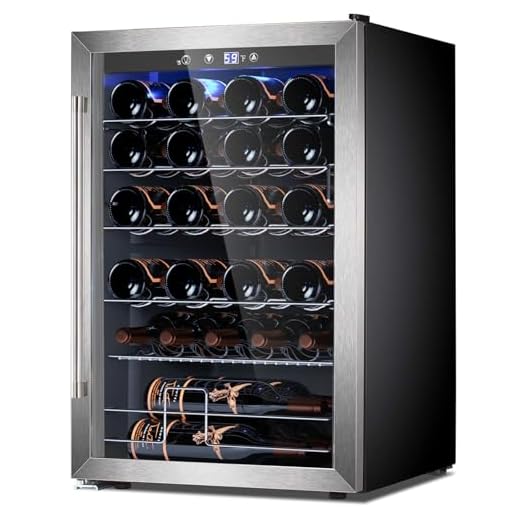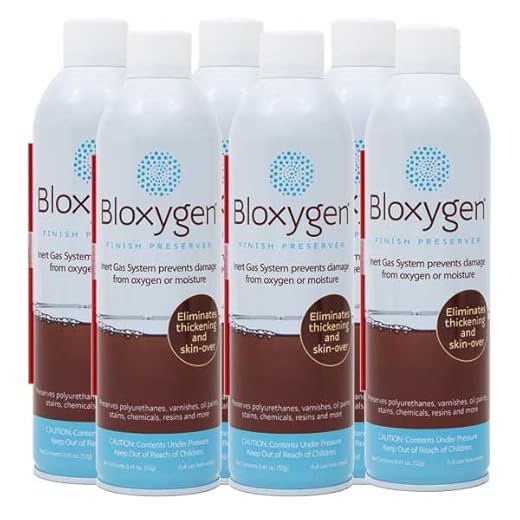



Once uncorked, a bottle of red can maintain its quality for about 3 to 5 days, provided it’s stored properly. To maximize freshness, reseal the bottle with its original cork or use a wine stopper.
Oxidation begins immediately after opening, altering the wine’s aroma and flavor. If you’re savoring a lighter red, such as Pinot Noir, aim to enjoy it within 2 to 3 days. For fuller-bodied varieties, like Cabernet Sauvignon, you may find they hold up better for up to a week.
Storing the bottle upright minimizes the surface area exposed to air, slowing oxidation. Keep it in a cool, dark place, ideally at a consistent temperature. If you have a wine refrigerator, this is the best option for maintaining ideal conditions.
Storing Open Bottles of Red Wine
A bottle of red that has been uncorked typically remains enjoyable for three to five days, depending on the type and storage conditions. To maintain its integrity, ensure the bottle is resealed with a cork or a wine stopper.
Environmental factors significantly influence longevity. Exposure to oxygen accelerates oxidation, altering the flavor profile. Aim to store it in a cool, dark place, ideally between 50-60°F (10-15°C). Avoid locations with fluctuating temperatures or direct sunlight.
For better preservation, consider using a vacuum pump to remove air from the bottle before sealing. This can extend the preservation period by an additional couple of days.
| Type of Red Wine | Days Open |
|---|---|
| Light-bodied (e.g., Pinot Noir) | 3-5 days |
| Medium-bodied (e.g., Merlot) | 4-6 days |
| Full-bodied (e.g., Cabernet Sauvignon) | 5-7 days |
Pay attention to sensory changes. If the aroma becomes sour or the taste is significantly altered, it’s best to discard the remaining contents. Enjoying red wine at its peak flavor is worth the effort of mindful storage.
Factors That Affect Open Red Wine Shelf Life
Temperature plays a significant role in determining how well an exposed bottle will hold up. Storing it in a cool, consistent environment is crucial; aim for around 55°F (13°C). Fluctuating temperatures can cause the wine to age prematurely.
Exposure to oxygen is another key element. Once a bottle is uncorked, oxygen begins to interact with the wine. Using a vacuum pump or preserving spray can help extend its freshness by minimizing oxygen contact.
Light can also degrade a wine’s quality. Ultraviolet light can cause chemical reactions detrimental to its flavor profile. Always keep the bottle away from direct sunlight and bright artificial lights.
Lastly, the cork’s integrity matters. A damaged or poorly sealed cork allows for more air to enter, which accelerates spoilage. Consider transferring any leftover liquid into a smaller bottle to reduce air exposure.
For those concerned about their pet’s diet, check out the best dog food for delicate stomach uk for helpful recommendations.
Signs That Your Open Red Wine Has Gone Bad
Trust your senses. If a bottle of wine smells like vinegar, has an off-putting aroma reminiscent of rotten eggs, or exhibits a sharp, unpleasant odor, it’s likely spoiled.
Visual cues matter. A drastic change in color, such as a dull brownish hue instead of vibrant red, indicates oxidation. Sediment or cloudiness not typical of the wine can also suggest deterioration.
Taste reveals much. A sour, overly acidic flavor or an unexpected bitterness signals that the wine has passed its prime. If the usual fruitiness is replaced by musty or flat notes, it’s a clear sign of spoilage.
Texture plays a role, too. If the wine feels overly thin or has an uncharacteristic astringency, it may be time to discard it. The mouthfeel should remain consistent with what you expect from that particular varietal.
Lastly, consider the closure. If the cork appears compromised, with signs of leakage or dryness, the wine inside is likely affected. A compromised seal allows air to enter, leading to unwanted oxidation.
Best Storage Practices for Open Red Wine
Store unfinished bottles upright in a cool, dark place, ideally between 55°F and 65°F (13°C to 18°C). Avoid exposure to light and temperature fluctuations, which can spoil the flavor.
Use Proper Sealing Techniques
Seal the bottle tightly with the original cork or a wine stopper designed for preserving wine. Vacuum pumps can also be effective in removing air from the bottle, which helps slow oxidation.
Refrigeration Benefits
Refrigerate leftover wine, even red varieties. Chilling helps to reduce the rate of oxidation, preserving taste for a few extra days. Before serving, allow the wine to warm slightly to enhance its aroma and flavor.
- Keep the bottle away from heat sources such as stoves or direct sunlight.
- Avoid storing in areas prone to vibrations, like near appliances.
- Consider using a wine fridge for optimal conditions if you frequently have open bottles.
By following these guidelines, the quality of your remaining wine will be maintained, allowing you to enjoy each glass to its fullest.
Extend the Life of Open Red Wine
To maximize the longevity of your partially consumed bottle, consider using a vacuum pump to remove excess air. This method significantly slows oxidation, allowing the flavors to remain intact for a longer duration. Aim to store the bottle upright to minimize the surface area exposed to air.
Temperature Control
Storing the bottle in a cool, dark place is crucial. Ideally, a consistent temperature between 50°F and 65°F (10°C to 18°C) helps maintain the wine’s integrity. Avoid fluctuations in temperature, as they can disrupt the delicate balance of flavors.
Use of Wine Preservers
In addition to a vacuum pump, consider using inert gas wine preservers. These products create a protective barrier over the wine, preventing oxygen from interacting with it. Such techniques can extend freshness significantly beyond typical storage methods.
Differences in Shelf Life Between Red Wine Varieties
The longevity of a bottle once uncorked varies significantly among different types. For example, robust varietals like Cabernet Sauvignon and Syrah can maintain their quality for up to five days, thanks to their higher tannin levels and acidity that act as natural preservatives.
In contrast, lighter options such as Pinot Noir or Gamay generally offer a shorter timeframe, typically around three days. These wines possess lower tannins and are more susceptible to oxidation, which affects their freshness more quickly.
Fortified wines, including Port and Sherry, stand out with an extended lifespan post-opening, often lasting two to three weeks. The higher alcohol content in these selections contributes to their resilience against spoilage.
When considering aging potential, note that older vintages may not last as long once opened. A ten-year-old bottle might only last two to three days, while a newly released wine could provide a more extended drinking window.
Ultimately, understanding the characteristics of each variety allows for better enjoyment. Selecting the right type based on your consumption plans is key to maximizing flavor and freshness.
Tips for Enjoying Open Red Wine at Its Best
To maximize the experience of your partially consumed bottle, follow these specific strategies:
- Temperature matters: Serve at the ideal temperature for each variety. Most reds shine at around 60-65°F (15-18°C). Use a thermometer for accuracy.
- Decanting: Pouring wine into a decanter introduces oxygen, enhancing flavors. This is especially beneficial for older bottles or those with significant tannins.
- Glassware: Choose appropriate glassware. Larger bowls allow for better aeration, while narrower openings concentrate aromas.
- Food pairings: Consider complementary dishes. Bold reds pair well with rich meats, while lighter varieties suit poultry or vegetarian options.
Experiment with food combinations to discover unique pairings that elevate both the wine and dish.
- Aromatics: Swirl the glass to release aromas. Take a moment to inhale the bouquet before tasting.
- Mindful sipping: Take small sips to appreciate the flavors. Allow the wine to linger on the palate to fully experience its complexity.
- Notes: Keep a journal of your tasting experiences. Record your thoughts on different varieties and pairings to refine your preferences.
These practices not only enhance enjoyment but also deepen your understanding of the wine. Engage with it fully, and each sip will reveal new nuances and stories. Cheers!









